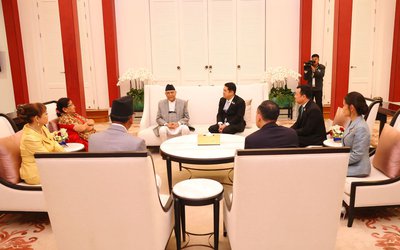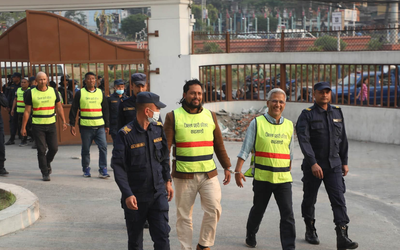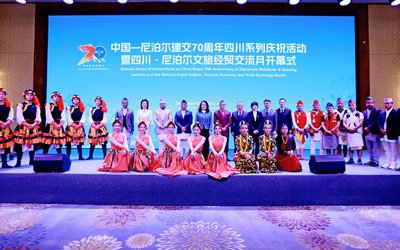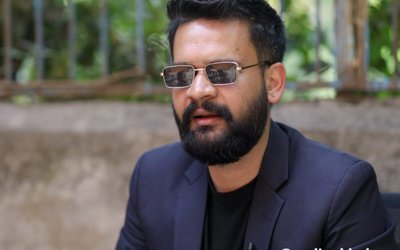More on News





Shyam Saran last visited Nepal in April 20, 2006, along with Congress leader Karan Singh, as special envoy of the prime minister.India’s popularity in Nepal was then at its peak. Its lead role in the restoration of democracy — its mediation in bringing the Maoists to the peace process and within the democratic fold under the much-discussed 12-point agreement, and its support for Nepal’s shift to federalism, republicanism and secularism — had positioned India as a country that recognised the need for radical changes in the neighbourhood. In that euphoric moment, India was accepted as a “friend in need” rather than a big bully. And Shyam Saran, who had been ambassador here before moving to Delhi as foreign secretary, was perceived as India’s most visible face in Nepal during that phase.
But four years later, as he visits Nepal again as a special envoy, the country is in deep trouble and turmoil. The peace process has made little headway, except that the Maoists have not raised arms yet. The constituent assembly has failed to deliver the constitution on the rigidly prescribed deadline of May 28, and its credibility is so low that people do not even expect it to craft the constitution in its extended one-year tenure. The failure to elect a prime minister in the last three exercises in the house has further discredited the three major political parties — Nepali Congress, Unified Communist Party of
Nepal-Maoist (UCPN-M) and the Communist Party of Nepal-Unified Marxist Leninist (CPN-UML) — as well as the constituent assembly. With so much uncertainty, and the parties’ failure to institutionalise the changes of the 2006 movement, Nepal’s political actors are now a discredited lot. And India is also seen as a failure, in equal measure if not more so. So Saran’s image — as arguably the best known Indian in Nepal — is also not what is used to be.
Through his meetings in Nepal, Saran emphasised that peace, political stability and economic prosperity were vital for Nepal, and India was willing to contribute in the realisation of these goals. But with the UCPN-M, NC and UML as well as the United Democratic Madheshi Front (UDMF) failing to come together to form a national consensus government, none of these aims can be achieved. The country now reels under a daily eight-hour power cut, foreign investors do not see it as an attractive destination, and more than 300 industries (mostly small and medium ones) remain closed because of strikes, mostly by
Maoist-led trade unions. The economy is at its worst point yet. The Madhesh groups largely see Saran as an ally and supporter of their demand that Nepal’s plains — around 23 per cent of the total area with 48 per cent of the country’s population — be an autonomous single province within federal Nepal. This is something all the three major parties have refused to concede. The day Saran was to arrive, Abisekh Pratap Shah, who was one of the 11 MPs to vote in favour of UCPN-M chief Prachanda in the prime ministerial race on August 2, said that “India was interfering in Nepal’s internal affairs” and that the Terai parties would not mortgage their nationalism and pride.
India’s rise in Nepali esteem for a while after the 2006 changes, its increased presence and support to the abolition of the monarchy had a direct impact on the Chinese outlook on Nepal. For China, the monarchy’s exit meant the loss of an ally that it had worked with, in close cooperation and trust, for more than half a century. That, along with the fact that the void created by the monarchy’s abrupt end was too big to be exploited by India and the European Union, caused it to enlarge its presence in every sector in Nepal, from tourism to hydro-power, defence and development. As uncertainty and chaos loom large in Nepal, China is keen to have the same set of treaties that India has signed so far. China is also believed to have resented the Terai region’s demand for autonomy, as a move to create a “buffer within buffer”.
In the current context, the intensified Maoist attack on the Indian state and their suspected proximity with Nepali revolutionaries is understandably a matter of concern for the government of India. As a key actor and mediator, Saran would want the Nepali peace process salvaged, and the Maoists, as the largest party in the constituent assembly, given their due. It will be equally tricky for him to reassure Terai groups. They demand not only a province in federal Nepal that would dominate national politics, but also mass entry into the Nepal army (in proportion to the Terai population). No other political party will accept that demand. Such unbridled aspirations and demands from organised groups and regions have sprung up regularly in Nepal’s recent politics. The state’s authority has been eroded by the casteist, ethnic and other rights-based movements funded and supported by the international community. Saran may not have much to contribute beyond sincerely assessing where India went wrong in Nepal, like the actors in its north. It will be easier for him, more than anyone else, to gauge the changes between his two visits to Nepal.







